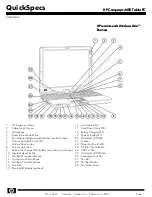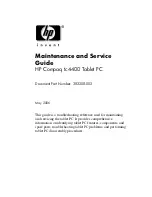
ASUS A7V User’s Manual
25
3. HARDWARE SETUP
3.5 System Memory (DIMM)
This motherboard uses only Dual Inline Memory Modules (DIMMs). Three sockets
are available for 3.3Volt (power level) unbuffered Synchronous Dynamic Random
Access Memory (SDRAM) of 8, 16, 32, 64, 128, 256, or 512MB to form a memory
size between 8MB to 1.5GB. One side (with memory chips) of the DIMM takes up
one row on the motherboard. This motherboard also supports NEC’s Virtual Channel
(VC) SDRAMs.
Memory speed setup is recommended through 4.4.1 Chip Configuration.
IMPORTANT (see General DIMM Notes below for more)
•
SDRAMs used must be compatible with the current Intel PC133 SDRAM
specification.
•
DO NOT attempt to mix PC133 SDRAMs with VCM SDRAMs.
System Memory
3. H/W SETUP
Install memory in any combination as follows:
DIMM Location
168-pin DIMM
Total Memory
Socket 1 (Rows 0&1)
SDRAM 8, 16, 32, 64, 128, 256, 512MB x1
Socket 2 (Rows 2&3)
SDRAM 8, 16, 32, 64, 128, 256, 512MB x1
Socket 3 (Rows 4&5)
SDRAM 8, 16, 32, 64, 128, 256, 512MB x1
Total System Memory (Max 1536MB) =
3.5.1 General DIMM Notes
•
DIMMs that have more than 18 chips are not supported on this motherboard.
•
For the system CPU bus to operate at
100
MHz/133MHz, use only PC100-/PC133-
compliant DIMMs.
•
ASUS motherboards support SPD (Serial Presence Detect) DIMMs. This is the
memory of choice for best performance vs. stability.
•
SDRAM chips are generally thinner with higher pin density than EDO (Extended
Data Output) chips.
•
BIOS shows SDRAM memory on bootup screen.
•
Single-sided DIMMs come in 16, 32, 64,128, 256MB; double-sided come in 32, 64,
128, 256, 512MB.
WARNING!
Be sure that the DIMM you use can handle the specified SDRAM
MHz or else bootup will not be possible.
















































